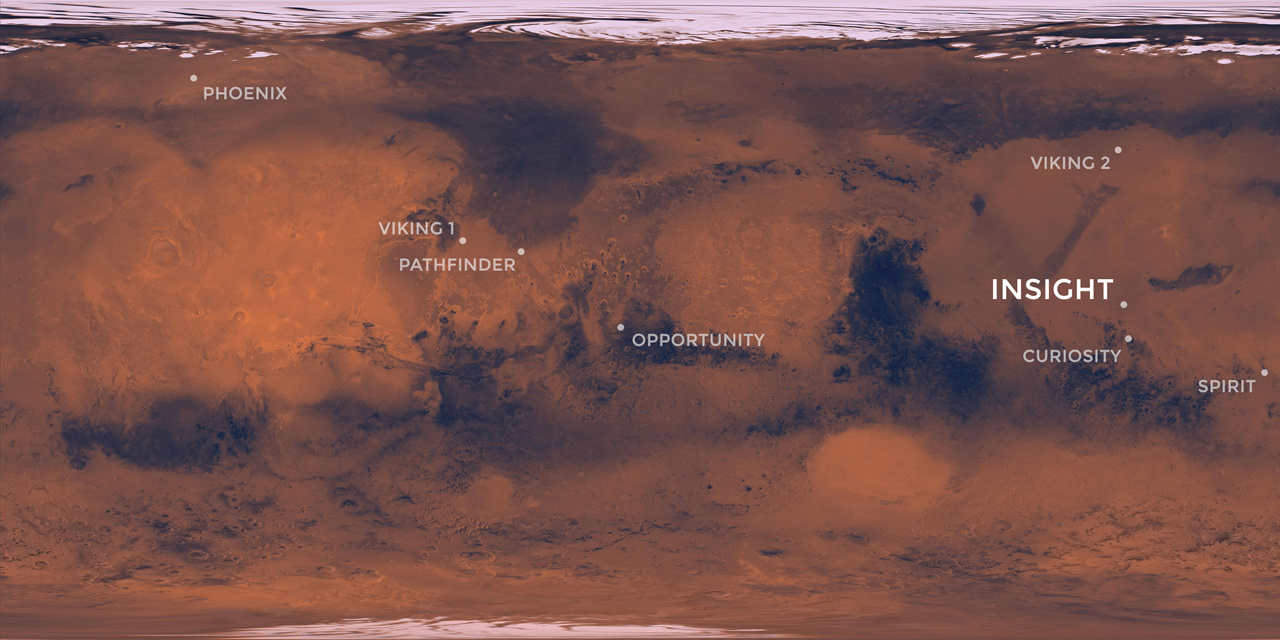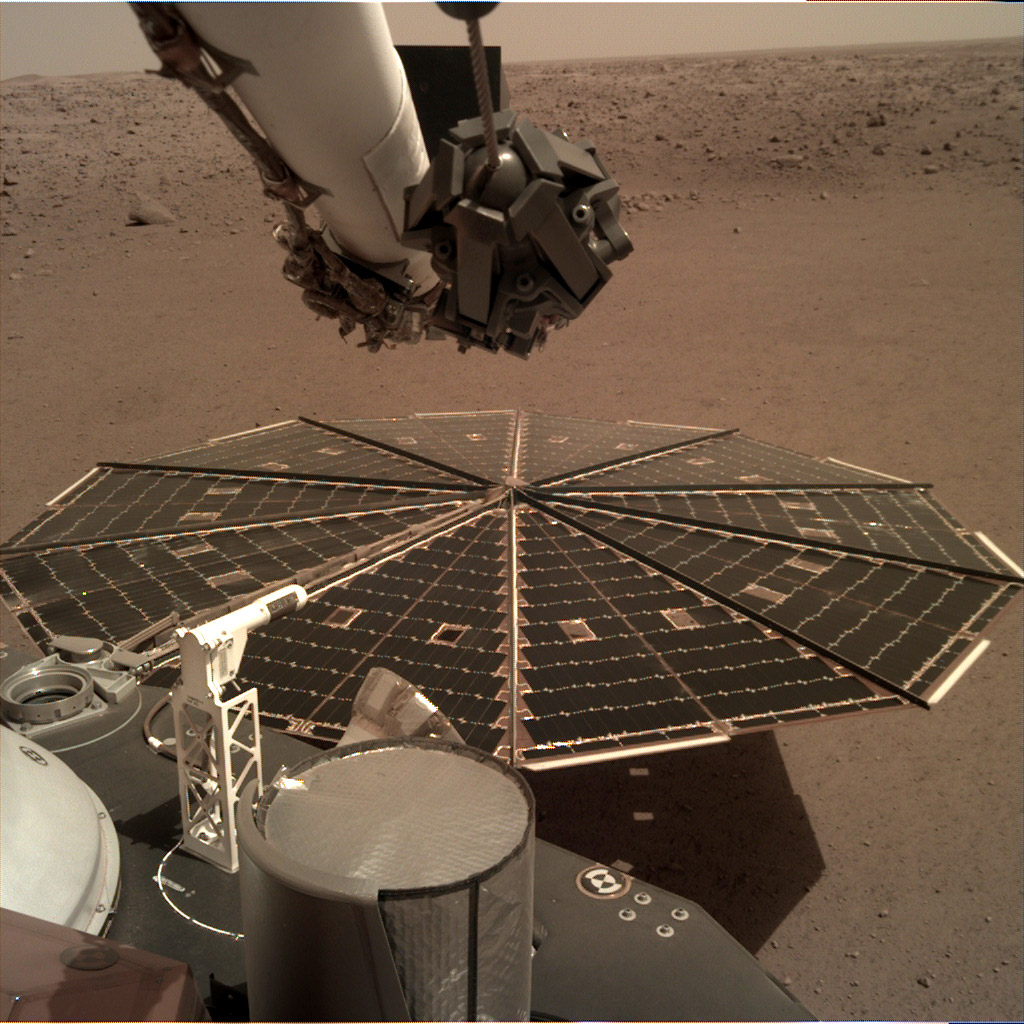It’s been a busy few weeks on Mars, with the InSight Lander arriving in late November, making it the newest member of the Martian robotic ground team.
The science hasn’t started yet, but the first photos of the landing area have come back, and testing of the science instruments has begun, with the first big reveal coming late last week – the first recording of Martian wind.

InSight provided the first landing on Mars since Curiosity in 2013. It went through the same ‘6 minutes of terror,’ where the communication delay between Earth and Mars meant the entire landing sequence was automated, and if something went wrong, it would be too late for mission specialists to fix it. InSight survived, and is now just flexing it’s scientific muscles for the first time.

It looks like a pretty boring landing site, but that’s the goal: A flat plain, where Insight can be stable and uninterrupted. The science it’s working toward is beneath the surface. The lander is going to measure seismic activity and subsurface temperatures, among other things, but the testing of these instruments is what brings us back to the wind.
The seismometer measured the vibrations of wind passing over the solar panels. This sound is very low in tone and pitch, partly due to the fact that Mars’ atmosphere is incredibly thin, meaning the wind is very weak compared to typical breeze on Earth. It needs to be amplified and adjusted to sound familiar to human ears, but when it is adjusted, it sounds pretty spectacular.
It’s one of those little unexpected things that mission specialists were able to grab, important for it’s public engagement factor. It’s a ‘human experience’ discovery, one that once again takes Mars from this imagined place to a real actual planet, with wind and weather and varying climate. I’m looking forward to the science from InSight, but also to the real connection it brings between Earth and Mars.
